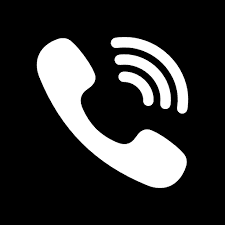The set theory was developed by German mathematician Georg Cantor (1845-1918). A set is a well-defined collection of distinct objects. An element of the set refers to each object in the set. When writing a set, curly brackets are used. It is represented by using a capital letter and may comprise elements like people, letters of the alphabet, numbers, shapes, variables, etc. The concept of sets serves as a fundamental part of present-day mathematics. Today, practically every discipline of mathematics employs this principle. Sets are used to define the concepts of relations, functions, geometry, sequences, probability, etc.
Representation of Sets
There are different methods of representing a set. They differ in the way in which the elements are listed. The three set notations used for representing sets are:
- Semantic Form – The semantic documentation depicts an assertion to show what are the components of a set. For example, Set A is the list of the initial five odd numbers.
- Roster Form – The most widely recognized structure used to address sets is the roster form wherein the components of the sets are encased within the curly brackets and isolated by commas. For example, Set B = {2,3,5,7,11}, which is the collection of the first five prime numbers. In a roster form, the order of the elements of the set does not matter, for example, the arrangement of the first five prime numbers can also be characterized as {2,11,5,7,3}. Additionally, if there is an endless list of elements in a set, they are characterized using a series of dots at the end of the last element. For example, infinite sets are addressed as, X = {1, 2, 3, 4, 5 …}, where X is the set of natural numbers.
- Set Builder Form – The set builder form has a specific rule or an explanation that describes the normal component of all the elements of a set. The set builder form involves a vertical bar in its representation, with a text depicting the character of the elements of the set. For example, P = { m | m is a prime number, m ≤ 31}. According to the assertion, all the elements of set P are prime numbers that are less than or equivalent to 31. Sometimes a “:” is used in the spot of the “|”.
Types of Sets
Depending on the characteristics and variety of elements, sets can be classified into different types, such as:
- Singleton Sets – A set that contains only one element is called a singleton or unit set. For example, Set A = { j | j is an integer between 7 and 9} which is A = {8}.
- Finite Sets – A set which contains a finite number of elements is known as a finite set. For example, Set P = {t | t is a prime number less than 20}, which is P = {2,3,5,7,11,13,17,19}
- Infinite Sets – A set that has an infinite number of elements is called an infinite set. For example, Set L = {Multiples of 7}.
- Empty or Null Sets – A set that has no elements is called an empty set or a null set. It is denoted by ‘∅’. For example, Set W = {}.
- Equal Sets – Two sets with the same elements are called equal sets. For example, Set A = {a,b,c} and Set B = {a,b,c}. Here, Set A and Set B are equal sets and can also be denoted as A=B
- Unequal Sets – Two sets with at least one element different are called unequal sets. For example, Set A = {q,w,e} and Set B = {r,w,e}. Here, Set A and Set B are unequal sets and can also be denoted as A≠B
- Equivalent Sets – Two sets having the same number of elements, though the elements are different, are called equivalent sets. For example, P= {1,2,3,4} and Q = {a,b,c,d}. Here, Set P and Set Q are equivalent sets since n(P) = n(Q).
- Overlapping Sets – Two sets can be called overlapping if they share one common element at least. For example, Set A = {a,b,c,d} and Set B = {q,w,e,d}. Here, element d is present in both sets. Therefore, A and B are overlapping sets.
- Disjoint Sets – Two sets with no common elements are called disjoint sets. For example, Set A = {1,3,5,7} and Set B = {2,4,6,8}
- Subset and Superset – For two sets A and B, if every element in set A is present in set B, then set A is a subset of set B(A ⊆ B) and B is the superset of set A(B ⊇ A). For example, Set A = {a,b,c,d} and Set B = {a,b,c,d,e,f,g,h,i,j} A ⊆ B, since all the elements in set A are present in set B. B ⊇ A denotes that set B is the superset of set A.
- Universal Set – A universal set is the collection of all the elements relevant to a specific subject. It is denoted by the letter ‘U’. For example, Let U = {The list of all road transport vehicles}. Here, a set of cars is a subset of this universal set, the set of cycles, trains are all subsets of this universal set.
Power Sets – A set of all the subsets that one particular set can have is called a power set. For example, Set A = {1,2,3}. Power set of A is = {{∅}, {1}, {2}, {3}, {1,2}, {2,3}, {1,3}, {1,2,3}}.










Talk to an expert?